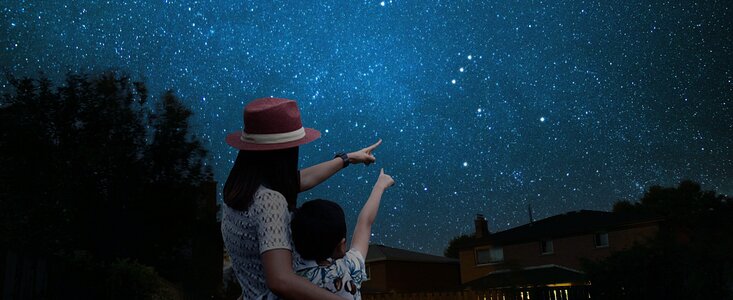Globe at Night’s Stellar Year — Will You Love the Stars in 2021?
2 February 2021
Globe at Night is an international, online, citizen-science campaign, run by NSF’s NOIRLab to raise public awareness of the impact of light pollution by inviting citizen-scientists to measure and submit their night sky brightness observations. Globe at Night had a record year last year, and this February it is inviting people to participate in the second “Love the Stars” campaign.
Last year Globe at Night reached a number of record milestones thanks to partnerships with different groups around the world. By September 2020, the project had exceeded its own record for the number of measurements made in a calendar year (previously 24,000) and at the end of 2020 it reached over 29,500 measurements from 96 countries. The large number of observations indicates the robustness, accessibility, and inclusiveness of the program to international participants.
In 2020 Globe at Night was ranked #2 of 20 of the top most-shared projects in SciStarter, an online citizen science hub and one of the project’s partners, #2 in the most joined category and #1 in the most bookmarked category.
In particular, the June 2020 Globe at Night campaign exceeded all expectations with 6700 observations in one night, 21 June, the longest night in the southern hemisphere. The Australasian Dark Sky Alliance earned the Guinness Book of World Records award for the most Globe at Night measurements in a single night.
This February, the Globe At Night campaign is asking people to take part in the second “Love the Stars” star count. Beginning on 3 February 2021 and running for ten nights, the project asks participants to look up at the night sky, find the bright constellation Orion, and then submit an observation as to which of a set of eight star maps most closely matches what they see. During the rest of the year, opportunities to take part using other constellations can be found on the project website [1]. During any of the 10-day campaigns each month, measurements can be submitted on the report page called a web app.
Light pollution not only threatens our “right to starlight”, but can affect energy consumption, wildlife and health. The Globe at Night project needs as many measurements as possible to get a global picture of the state of our night skies.
Notes
[1] As both moonlight and light pollution brighten the night sky, observations are only possible when the Moon is not illuminating the sky.
Links
Contacts
Constance Walker
NSF’s NOIRLab
Cell: +1-520-318-8535
Email: connie.walker@noirlab.edu
Amanda Kocz
Press and Internal Communications Officer
NSF’s NOIRLab
Cell: +1 626 524 5884
Email: amanda.kocz@noirlab.edu








